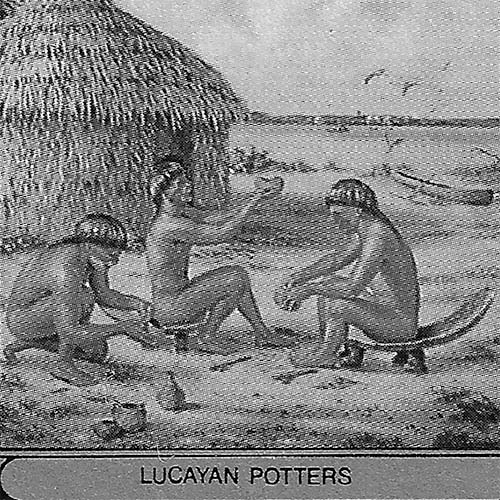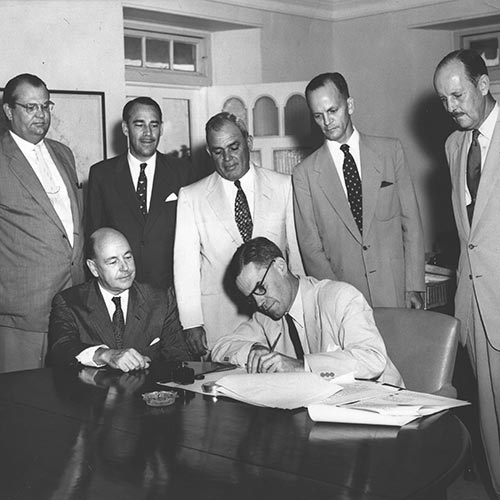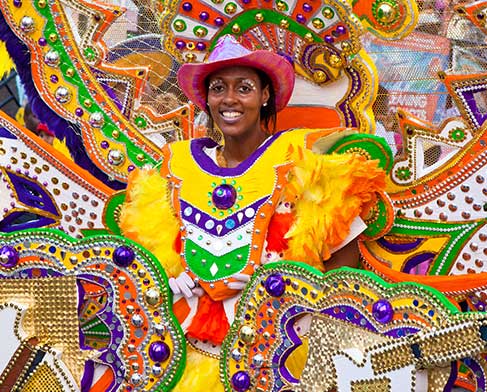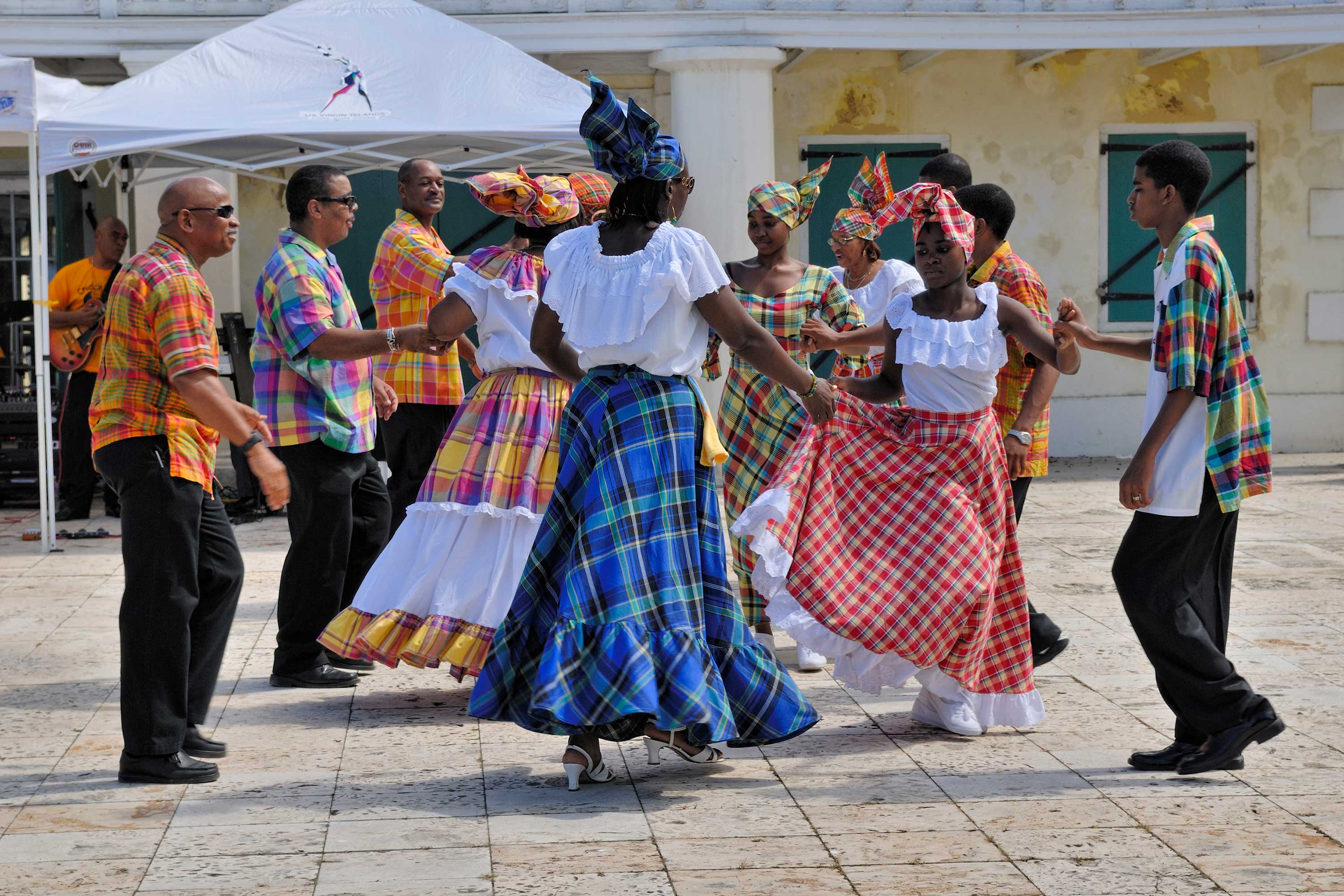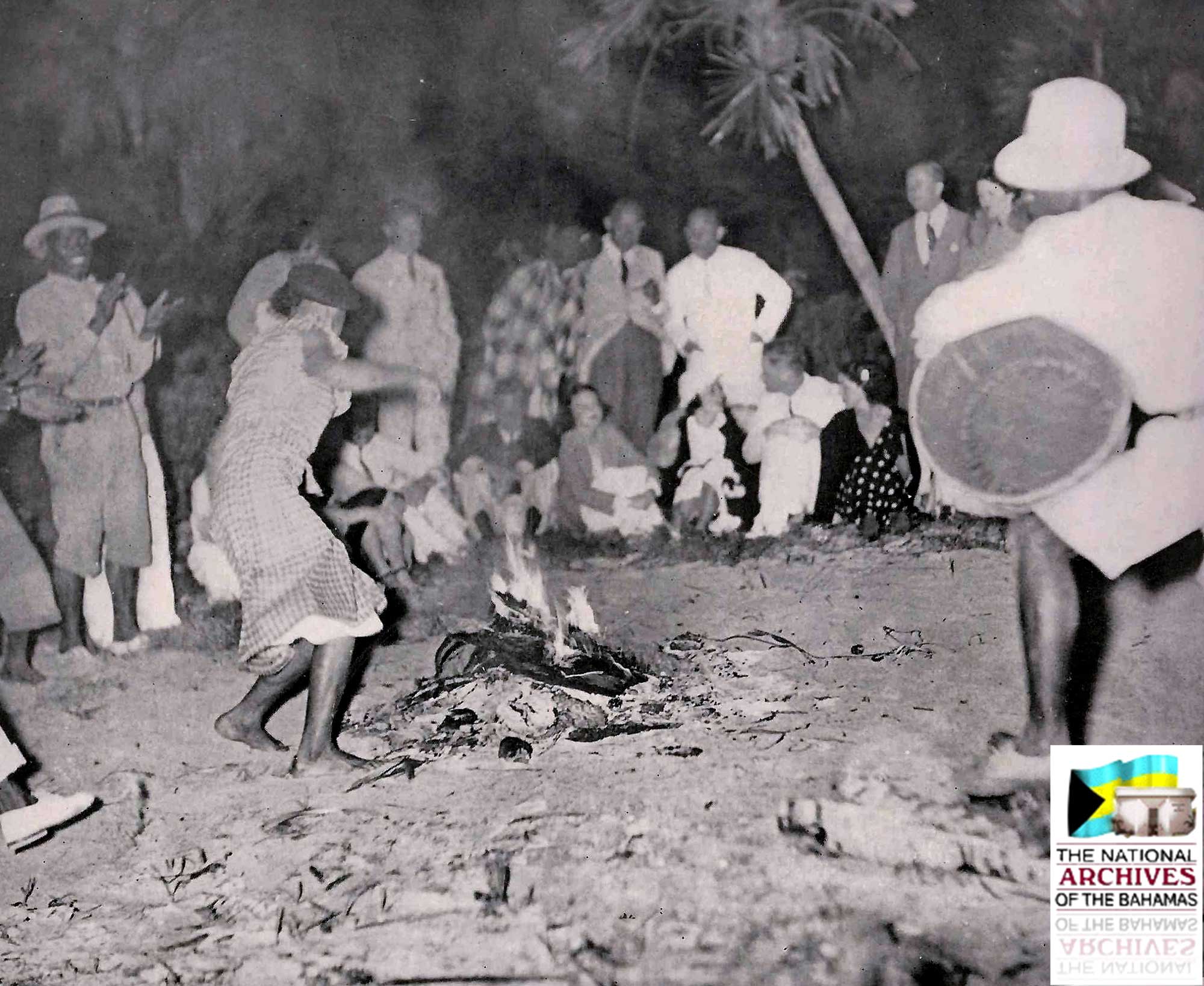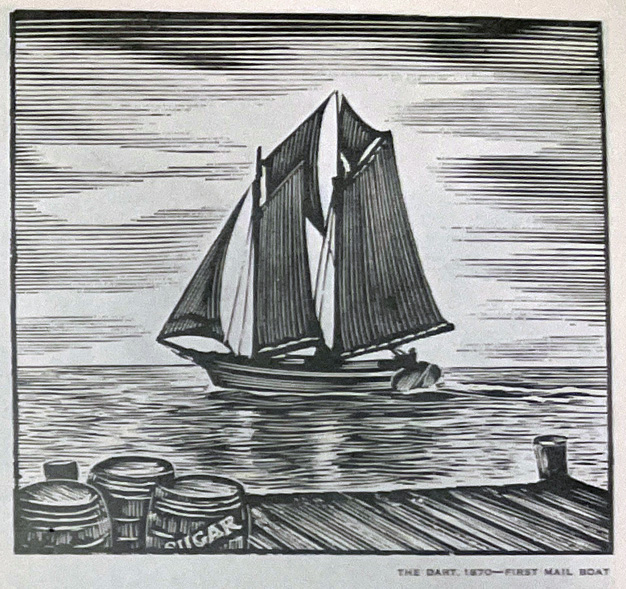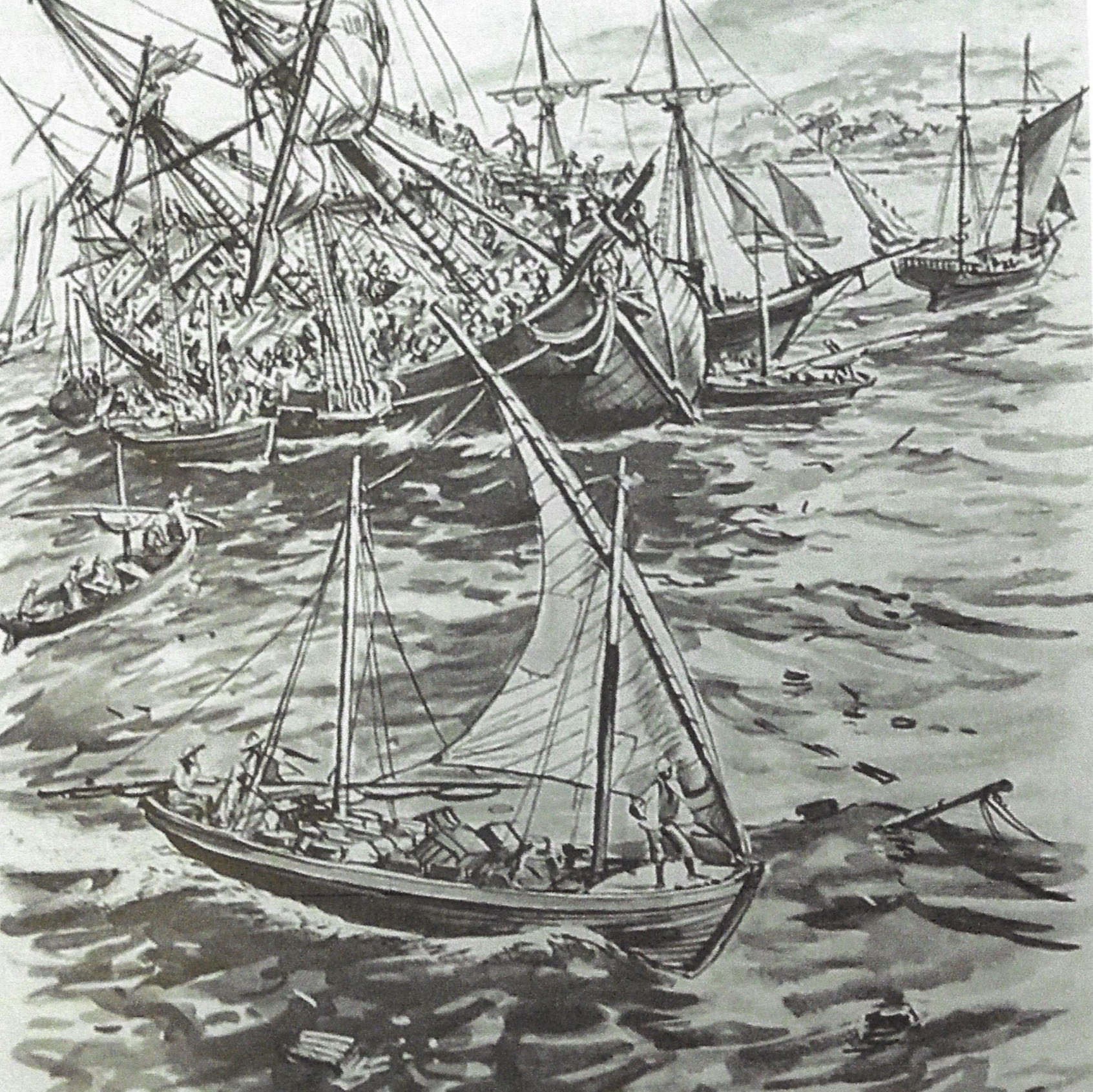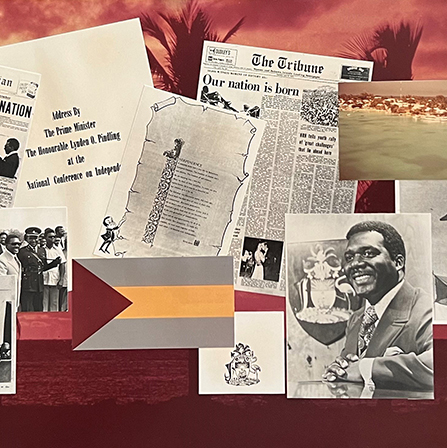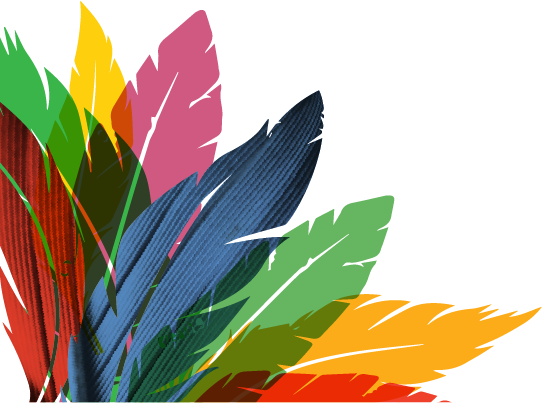Culture
Bahamian Folk Dances
Bahamian Folk Dances have origins in Africa and European ballroom tradition. Dance steps are interrupted with more freedom of movement of the torso, pelvis and loosened arm positions performed to the rhythms of the islands.
Partner Dances
Bahamian Quadrille
The Quadrille, also known as the wedding dance, is one of the most traditional dances of the Bahamas. Mimicking European ballroom tradition, the Bahamian Quadrille incorporates more freedom of movement of the shoulders, head, hip and a stamp of the foot or “mashing the roach.” The dance is performed to the sounds of Goombay, with two lines of men and women dancing in synchronized rhythm. The core movement of the dance is the “setting step” and is performed in two-four time. Other dance elements include the Crossing Pattern, Strawberry Basket Turn, Men’s Caper, Ladies Chain, Ladies Star and the Spin.
Heel & Toe Polka
The Heel & Toe Polka is a partner dance performed in a circular formation. The dance pattern is similar to the English polka but differs with the emphasis placed on the heel and toe movement and the variations of holding arms.
Calypso Waltz
The Calypso Waltz originated from the European Waltz. The partnered dance is performed in the four-four rhythm of island music in a circular formation with increased pelvic movement and improvisations.
Sculling Dance
The Sculling Dance is performed in two-four time with a basic step concentrated in the movement of the pelvis that is similar to the Meringue.
Ring Play Dances
Ring Play dances are traditionally performed in a ring or line formation. Dancers perform improvised movements with one dancer moving to the center of the ring encouraged by cheering, singing and stamping of feet of the participants.
Brown Girl in the Ring
Generally performed by children, this high energy dance is marked by improvisation and is performed in the round. A centre dancer performs movements that correspond to the lyrics. Dancers in the outer circle stamp their feet to the four-four rhythm of the song. Each participant is given an opportunity to perform as the centre dancer. Click here to listen.
The Bellaby
The Bellaby is performed in line formation to the folk tune “Shortnin Bread.” The dance movement is performed alternatively swiveling one heel forward, then the other while allowing the torso and shoulders to twist to the rhythm of the music.
The Jump-in Dance
The Jump-in Dance is popular with both children and adults. It is performed in a ring formation with dancers interacting with improvised movements in four-four time. The centre dancer chooses a partner and they jump into the ring to perform.
Knock the Conch
The Knock the Conch dance step requires coordination and speed. Dancers must knock the calf of one leg with the heel of the opposite foot.
Festival Dances
The Festival Dances have a strong African origin, except the Maypole dance which originated in Europe, and are performed on special occasions.
Maypole Dance
European in origin, the Maypole dance is performed as a celebration of Spring. Pairs of dancers move alternately around the base of the pole, each holding the end of a ribbon. As they weave in and around each other, the ribbons they hold are woven together around the pole. Click here to view Maypole Dance in Holmes Rock, Grand Bahama.
Junkanoo Dance
The Junkanoo Dance, performed during the Junkanoo Parade, has been likened to a warrior dance where the performers rush forward in steps with knees lifted high to the chest and feet stamped down in rhythm to the beat of goat skinned drums. A pivot step is used to showcase all sides of the dancer’s costume and to travel forward or side-to-side. Click here to view.
Goombay
The Goombay Dance is associated with the Goombay Festival celebrated every June through August. The dance is performed by women, who parade through the streets using the steps of the Junkanoo dance in addition to the Side Close Step and the Running Step. The women are followed by male musicians playing a variety of instruments to the rhythm of goat skin drums.
Fire Dance
The “fire-dance” was first described in The Land of the Pink Pearl by L. D. Powles in 1888.
“The people formed a circle and a fire was lighted in their midst. Me music consisted of two drums that would not work unless frequently warmed at the fire. The company clapped their hands without ceasing all through the dance, chanting all the while in a sort of dreary monotone, “Oh kindoian! Kindoiah” Mary, come along”…..Every now and then a man or a woman, or couple together would rush into the centre of the circle and dance wildly about. There appeared to be not step or idea of figure about the performance….”
The Fire Dance with its origins in African folk dance is a type of Jumping Dance performed in the round with a fire placed to one side. Performed at wakes and other celebrations, dancers take turns in the center of the ring performing steps to the rhythm of a drum. The drummer is positioned near the fire so that the heat from the fire can be used to tighten the skin of the drum to the correct tone.
In the 1930’s, Zora Neal Hurston, researched and documented the Fire Dance during several field trips to the Bahamas as part of the Federal Writers Project. The three reels of film footage from her research has since been lost. Click here to learn more about the life of Zora Neal Hurston.
The Fire Dance has evolved into a ritualistic solo performance were fire is passed over the body and “swallowed” at the conclusion of the performance.
Read more about the Fire Dance.
To view the performance of all dances click here.
To learn how to perform dances click here.
